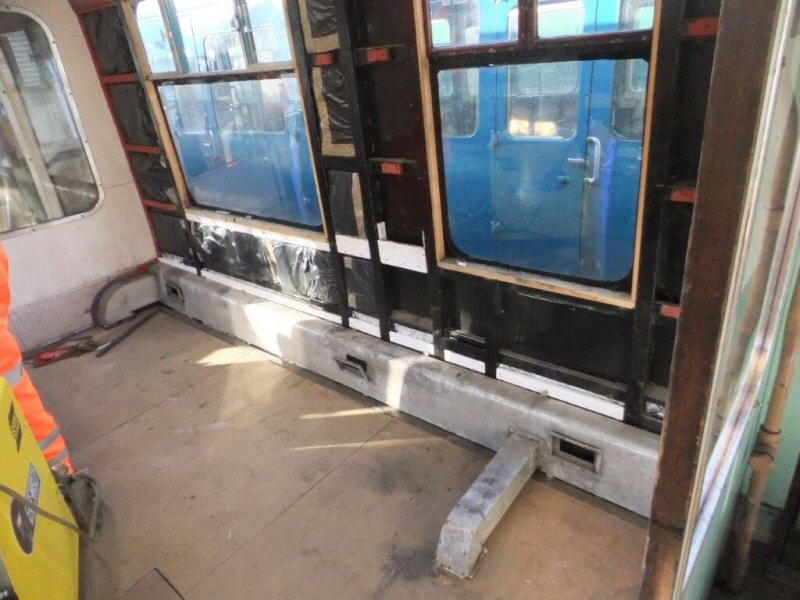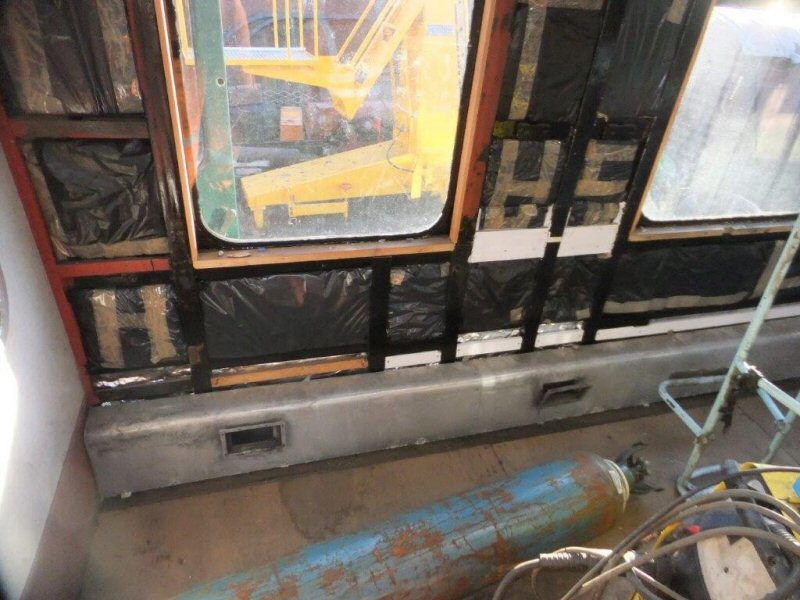

Another photo opportunity occurred when the Class 100 Gloucester trailer had a brief spell in a Butterley platform recently...
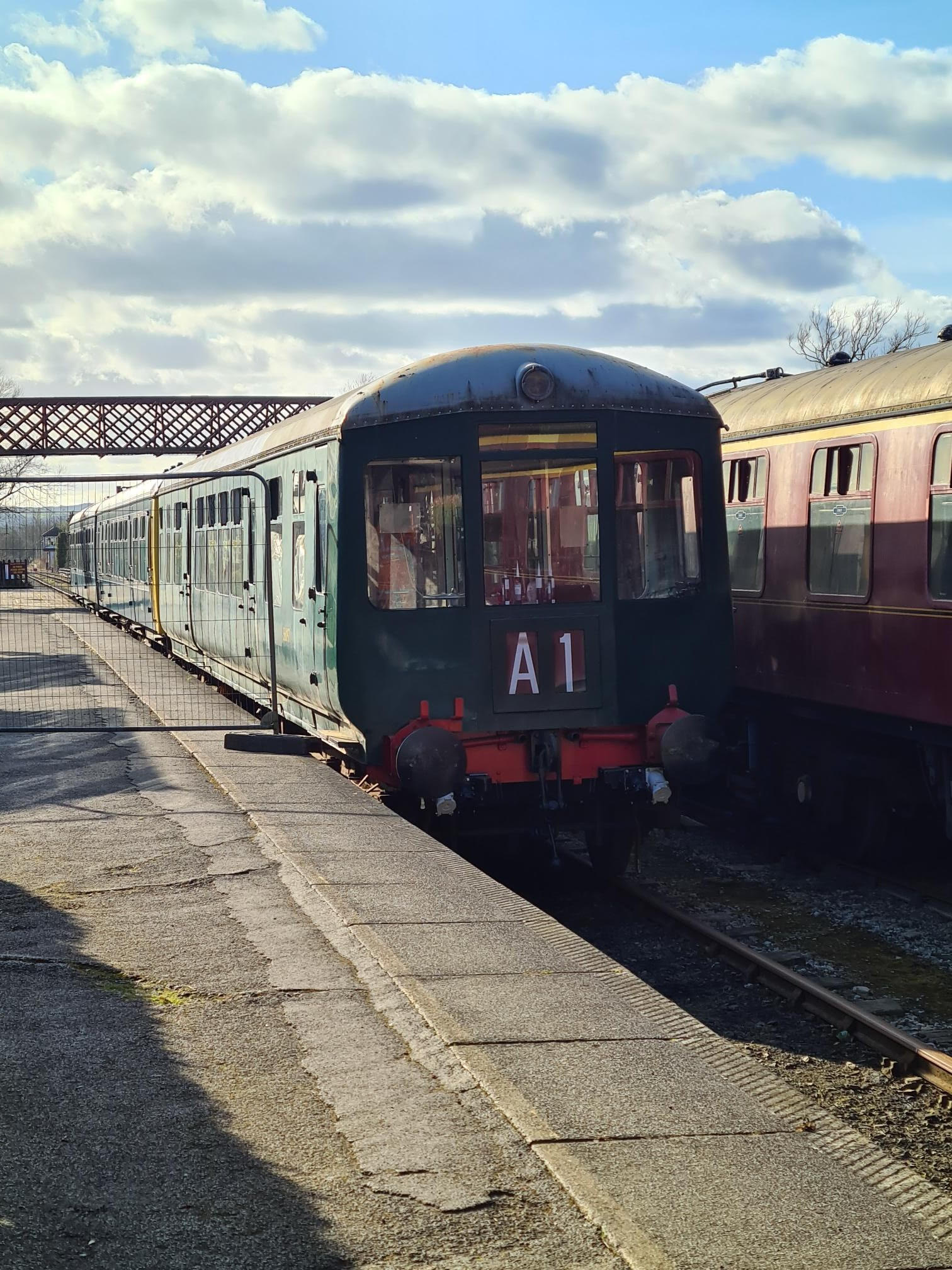
A superficial glance might give the impression that it could be ready to depart with a passenger service but more detailed scrutiny reveals that it is missing some fundamental components including vacuum brake pipes and windscreen wipers.
Further progress with the vehicle's restoration is described below.
Class 100 trailer car no. 56097 (under restoration at the Midland Railway, Butterley)
A luggage rack was retrieved from the store - albeit with considerably more difficulty than this sentence suggests - then dismantled and used as a template for a trial fitting of a luggage rack bracket...
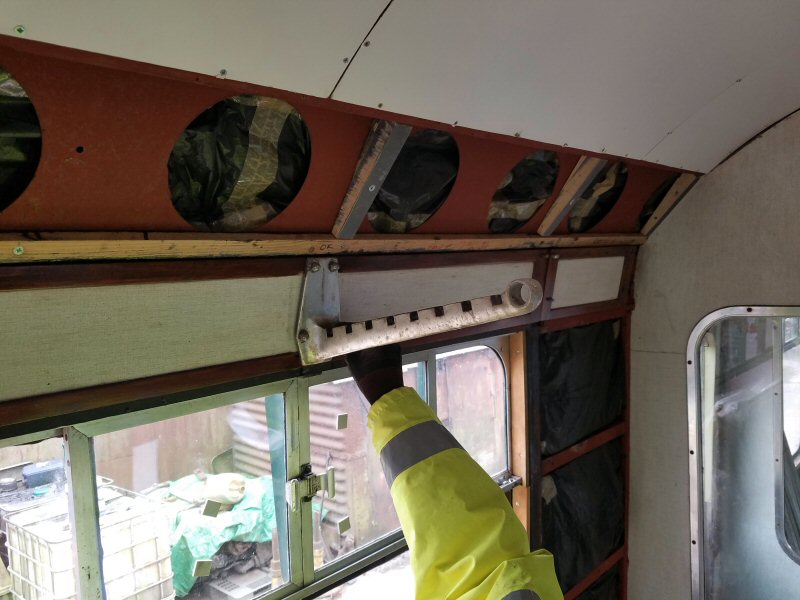
...following which the luggage rack backing panels were installed in the main saloon...
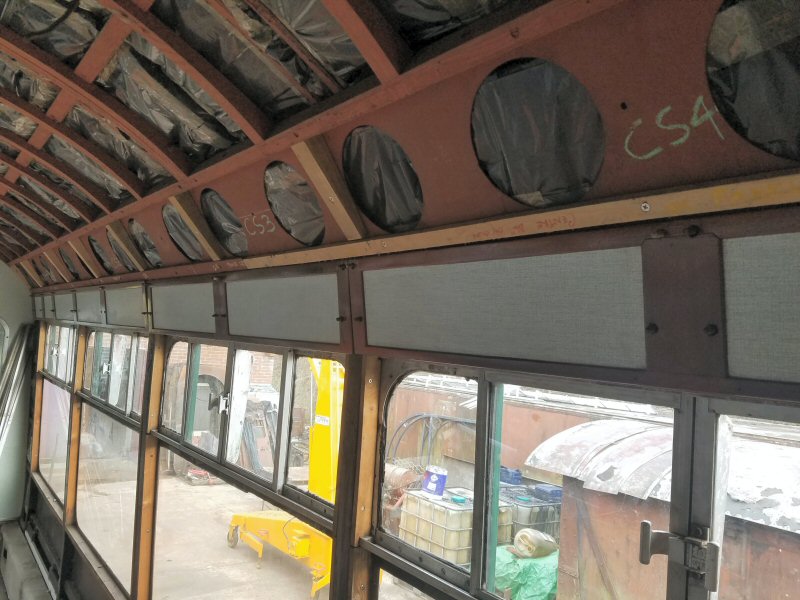
Some experiments were carried out with a sample of new panelling for the first class. It was produced by a company that 'digitised' the original, printed a sample on vinyl, and laminated it onto "dibond" - a common material used for signage. It is a sandwich of aluminium/plastic/aluminium which is very strong - more so than the modern-day equivalent of Formica. A judicious adjustment using a (calibrated?) knee made it fit the slight curve of the body framing and, unlike the Formica-type laminates, it retained its shape when the knee was removed. The following pictures show the new sample versus the original in a couple of different places. The noticeable difference in colour correlation is due to the varying amounts of discolouration of the original.
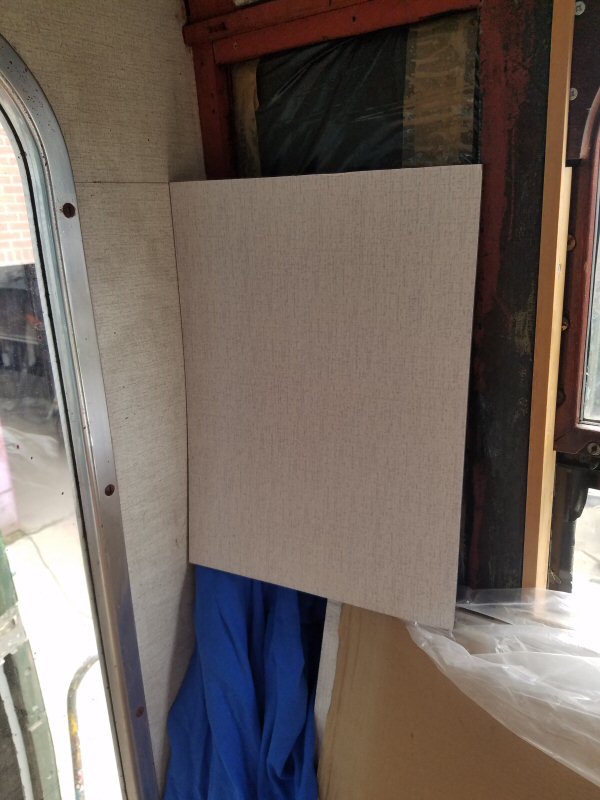
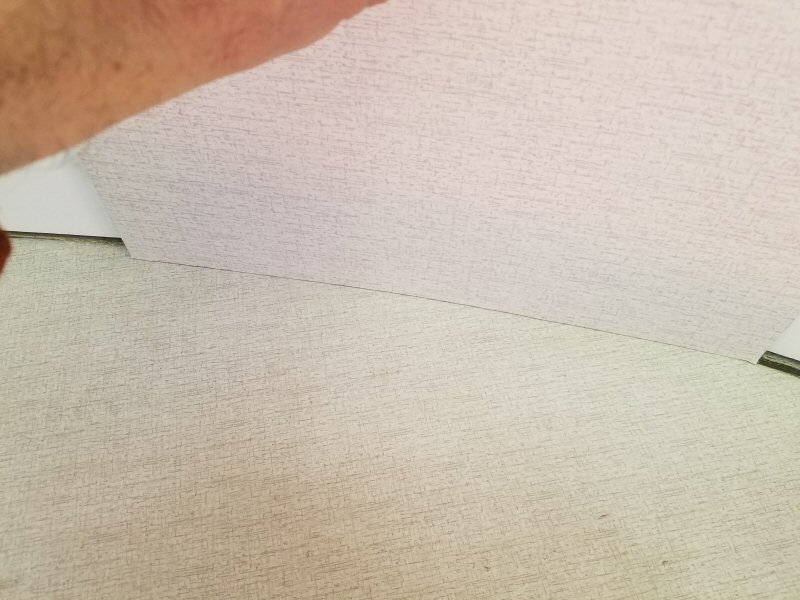
Various items of electrical conduit, lids etc. were painted with orange gloss...
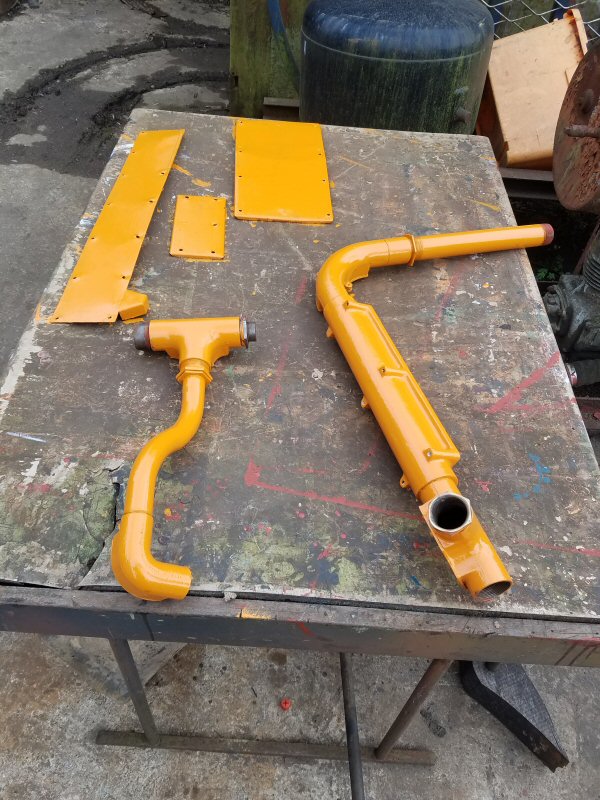
The battery box and associated framework were also painted black or white from various angles and the commode handles for one of the cab doors were cleaned ready for painting.
The wires were soldered to the wheel wear compensator box associated with the speedometer which means that the speedometer may now work - something that will be discovered when the vehicle is next moved.
The driver's side of the vehicle was washed to remove the extensive coat of green 'gunge' that has been accumulating for a while.
Work took place at both of our sites at the weekend. At Llangollen the major job was to remove and repair a class 104 vacuum brake cylinder and at Butterley work continued on the restoration of the Class 100 trailer vehicle. Detailed information about those jobs can be found under the headings for the respective vehicles below.
Although there was no time available for us to work on the class 127 in the shed at Llangollen, the removal of the rolling stock from the adjacent siding provided a rare opportunity to obtain the following images that show the nature and extent of its completed and ongoing bodywork repairs...
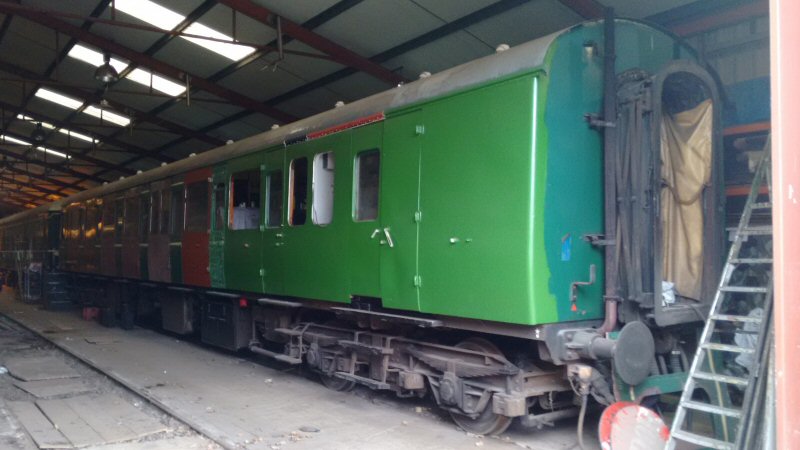
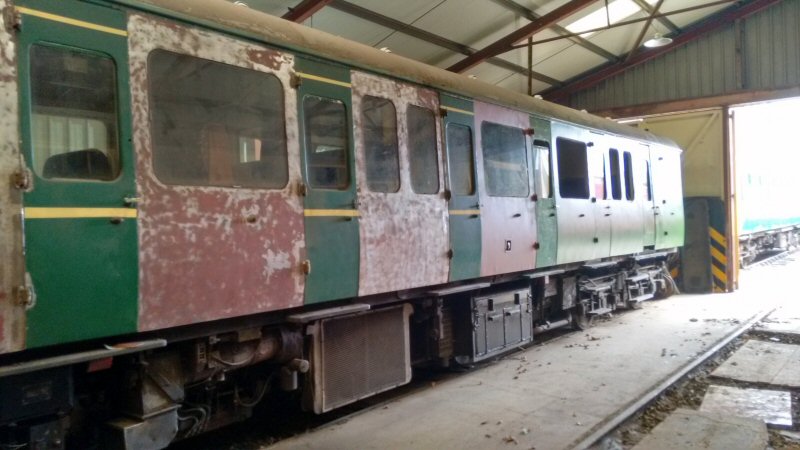
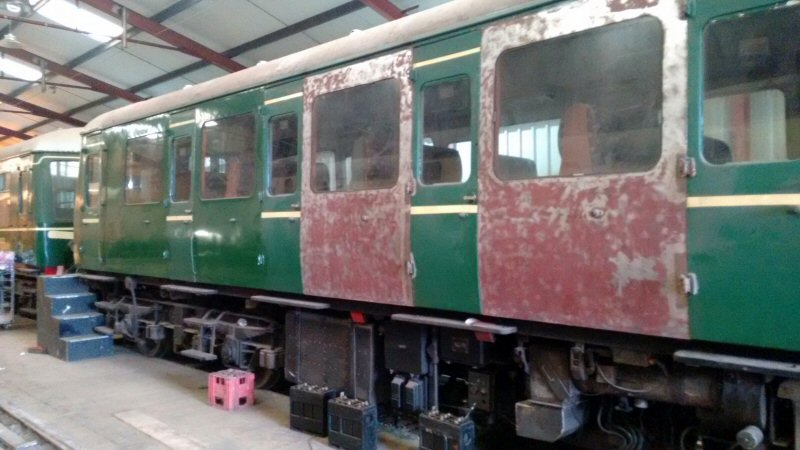
Class 104
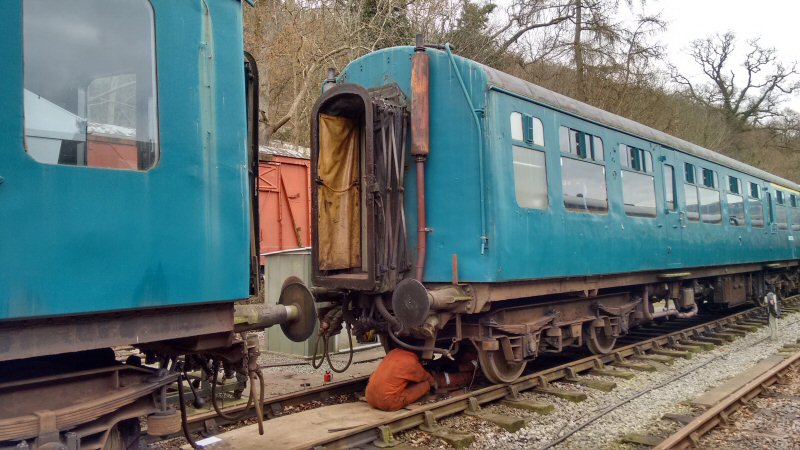
The rear vacuum brake cylinder on 50528, that had been noted as troublesome during the recent 'A' exam, was dropped down but only after various other items of brakegear were removed to make way for it...
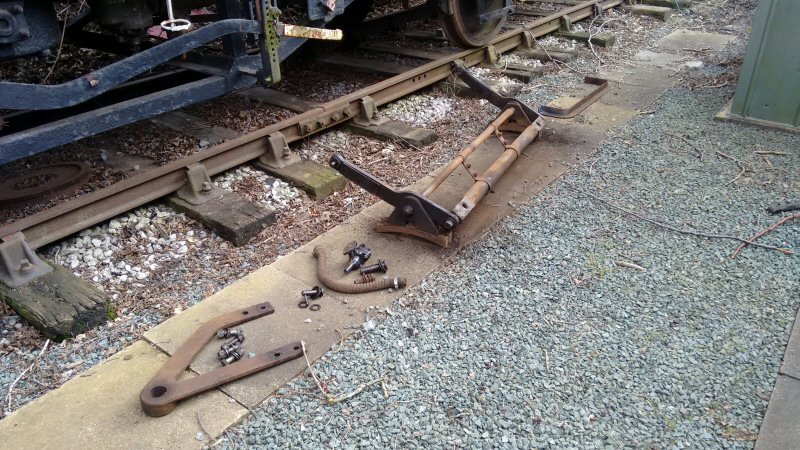
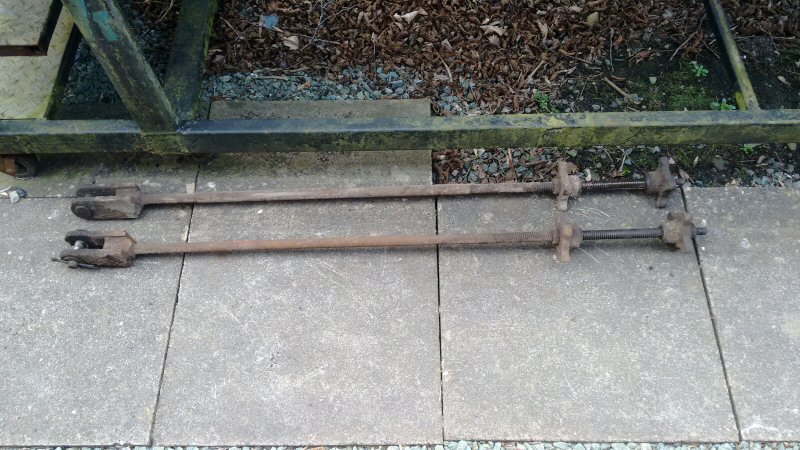
There must surely be someone's law that states that, "If there are n fastenings to undo, n-1 of them will come undone relatively easily and the nth will put up a fight" because that often appears to be the case just as it was on this occasion!
After the cylinder had been lowered down and there was a brief pause for all concerned to breathe a sigh of relief and don the appropriate satisfied expressions...
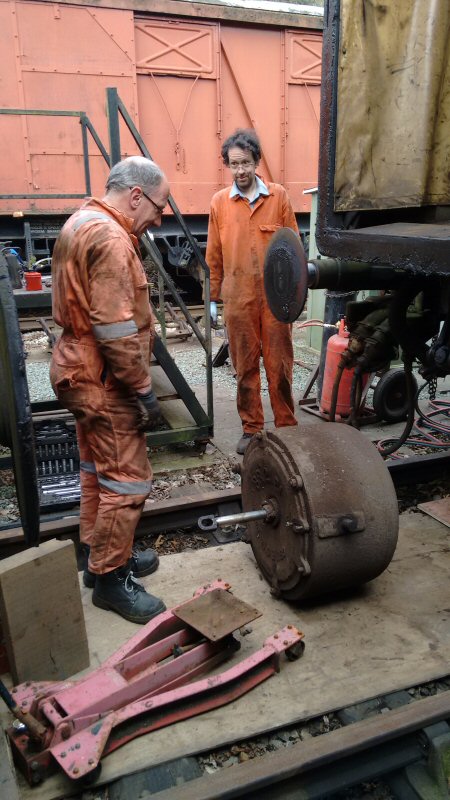
...the cylinder was dragged into the shed where it was fitted with a new rolling ring (the device that provides an air-tight seal between the piston and the cylinder) and the various components were cleaned and painted as appropriate...
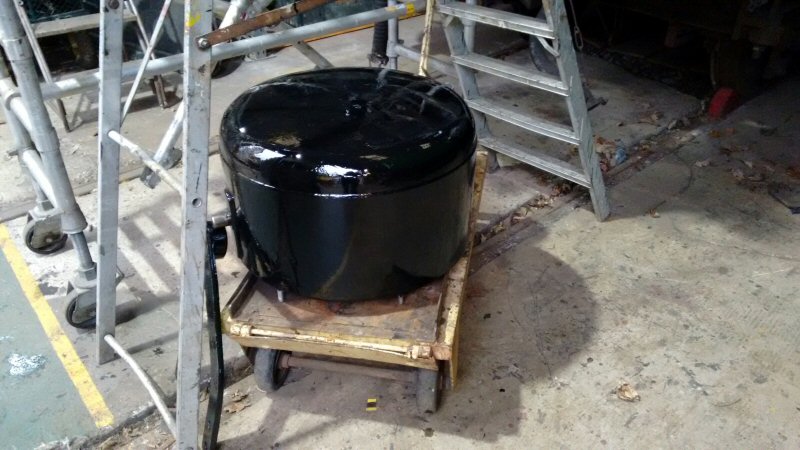
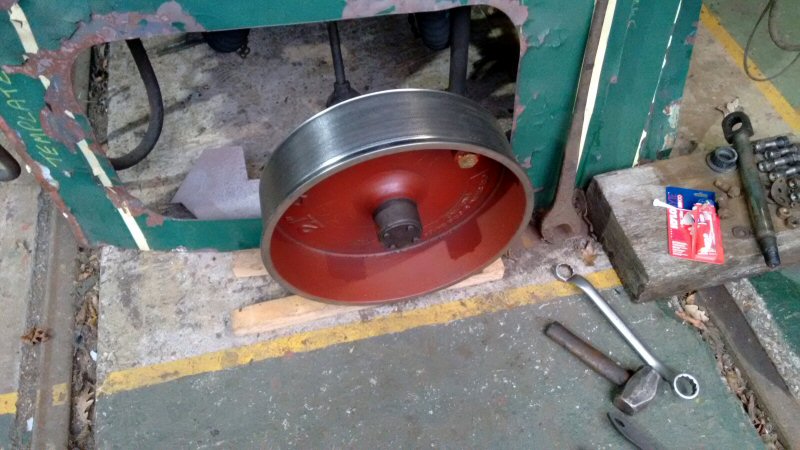
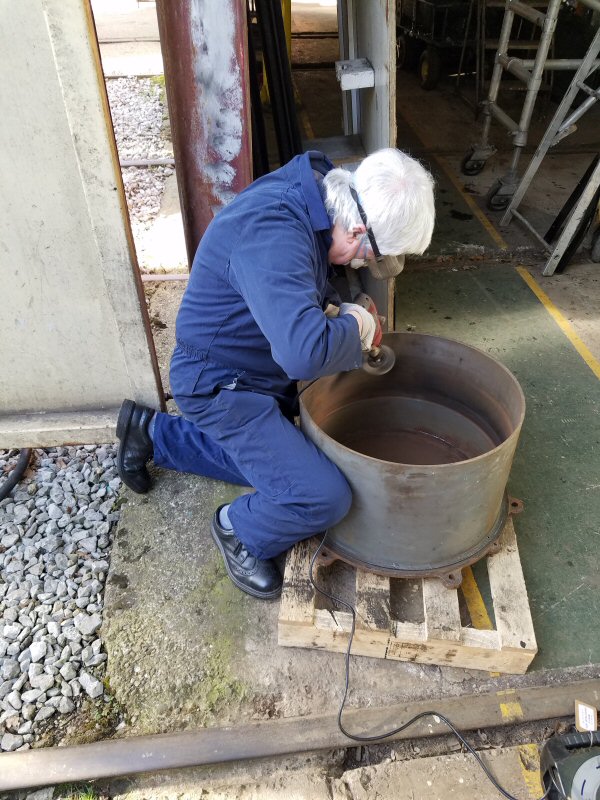
...resulting in this finished product...
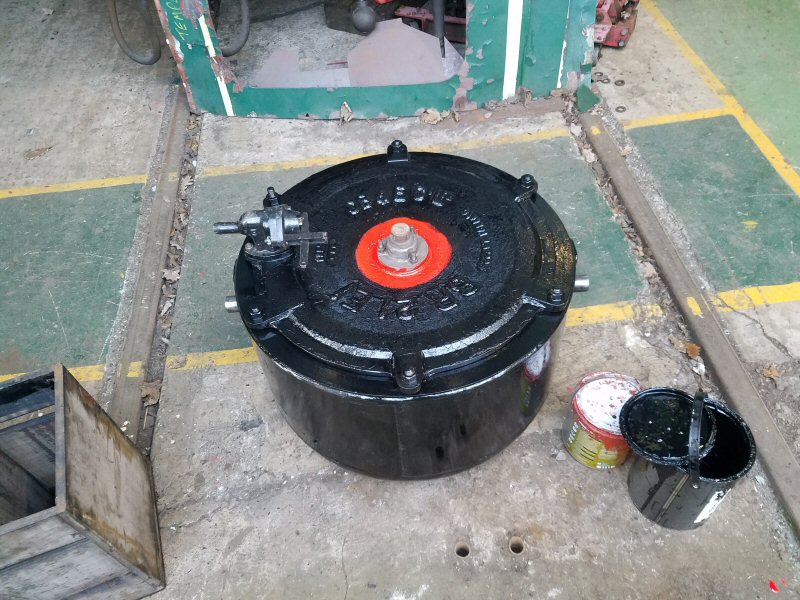
The red painted ring is intentional because it indicates the size of the rolling ring that the cylinder requires. The cylinder was then subjected to a number of tests "under laboratory conditions" and passed. There was also a bonus history lesson because, according to the inscriptions on the various components, the cylinder was built by the Consolidated Brake & Engineering Company Ltd in 1958 and the piston by Gresham and Craven Ltd on 26/11/1974. That led us to believe that two manufacturers had been involved until we subsequently discovered that the spigot on the outer case has a Westinghouse logo!...
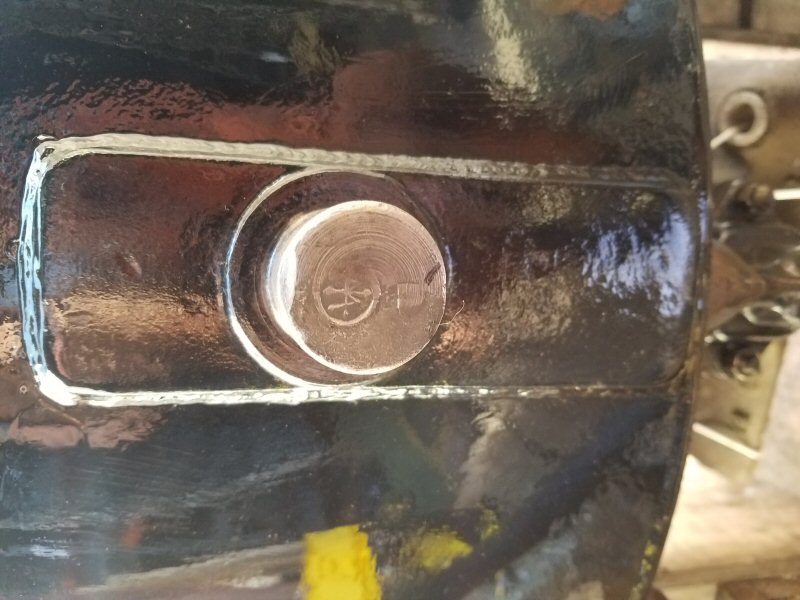
The brakegear components that had to be removed were all cleaned and lubricated as appropriate so that they, and the cylinder, are ready to re-install during our next visit.
Class 100 trailer car no. 56097 (under restoration at the Midland Railway, Butterley)
The installation of more ceiling panels resulted in the completion of the ceiling in the first class area and the first vestibule...


On the electrical front the junction box that will be housed inside the vehicle, instead of in its original place underneath it, was given a trial fitting...
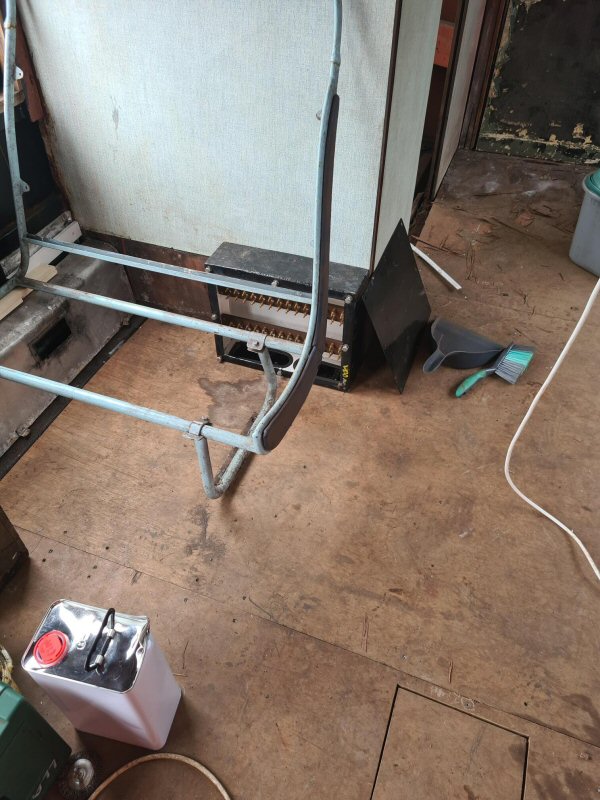
... four conduit angles were installed for the wires that will feed the jumper fittings at the rear of the vehicle and then string was threaded through two of them in readiness for pulling through the cables...
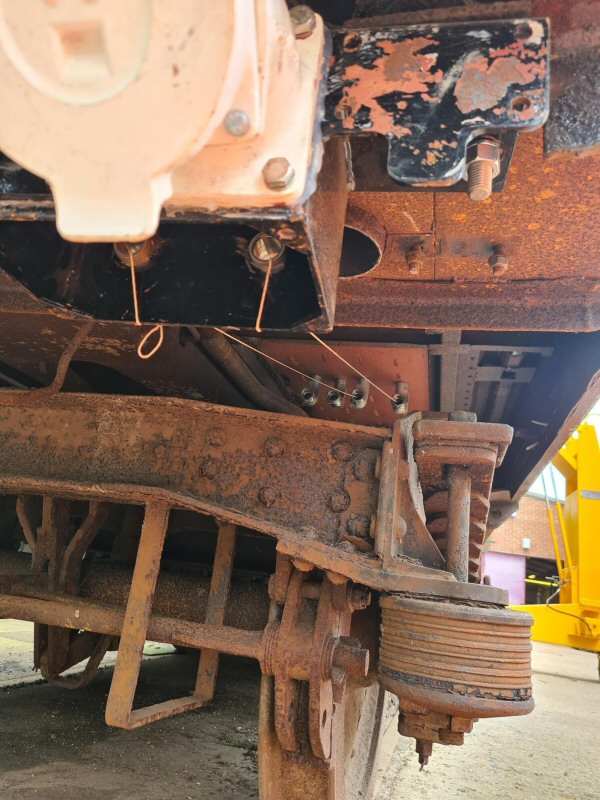
The battery box was painted in part undercoat and part top coat and various pieces of metal were also given a coat of paint...
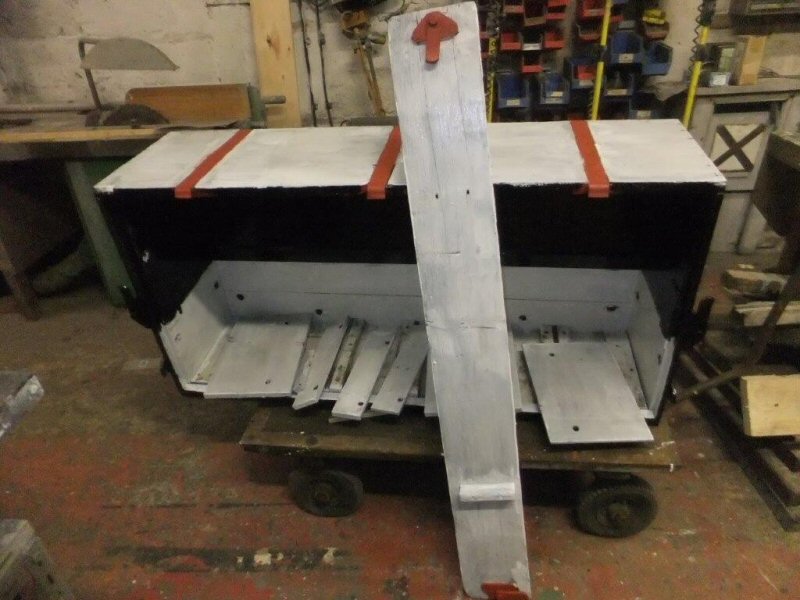
Finally another blanking plate on the roof was given a dose of the prescribed treatment to (hopefully) prevent it from leaking...
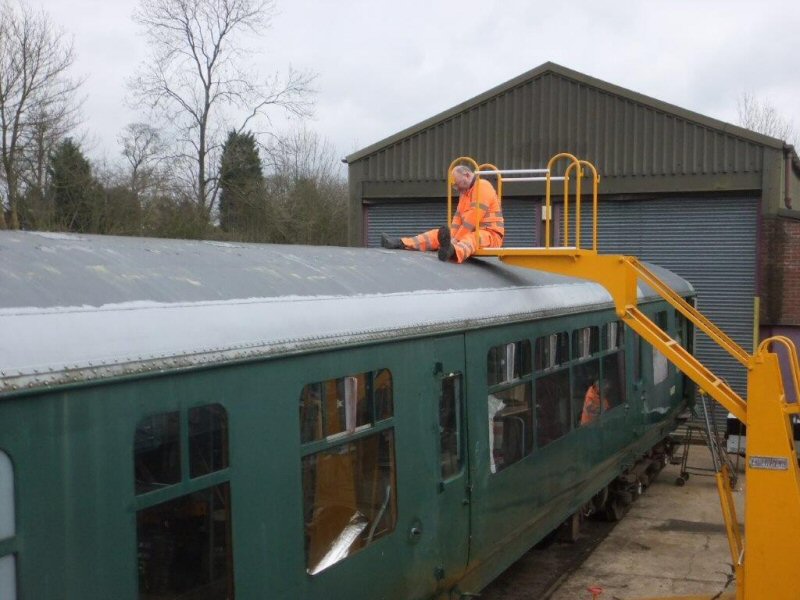
The Class 100 Gloucester trailer received lots of attention at the weekend thanks to a larger-than-usual attendance by group members at the Midland Railway, Butterley. The work that was carried out (and in some cases in!) is described below.
Class 100 trailer car no. 56097 (under restoration at the Midland Railway, Butterley)
Perhaps the most significant news was the installation of the first couple of ceiling panels - a very visible sign of progress after a lot of work on things that will (hopefully) remain hidden for a very long time. Another two panels will complete the first class area.

Insulation was installed behind the heater ducting in the rear saloon...
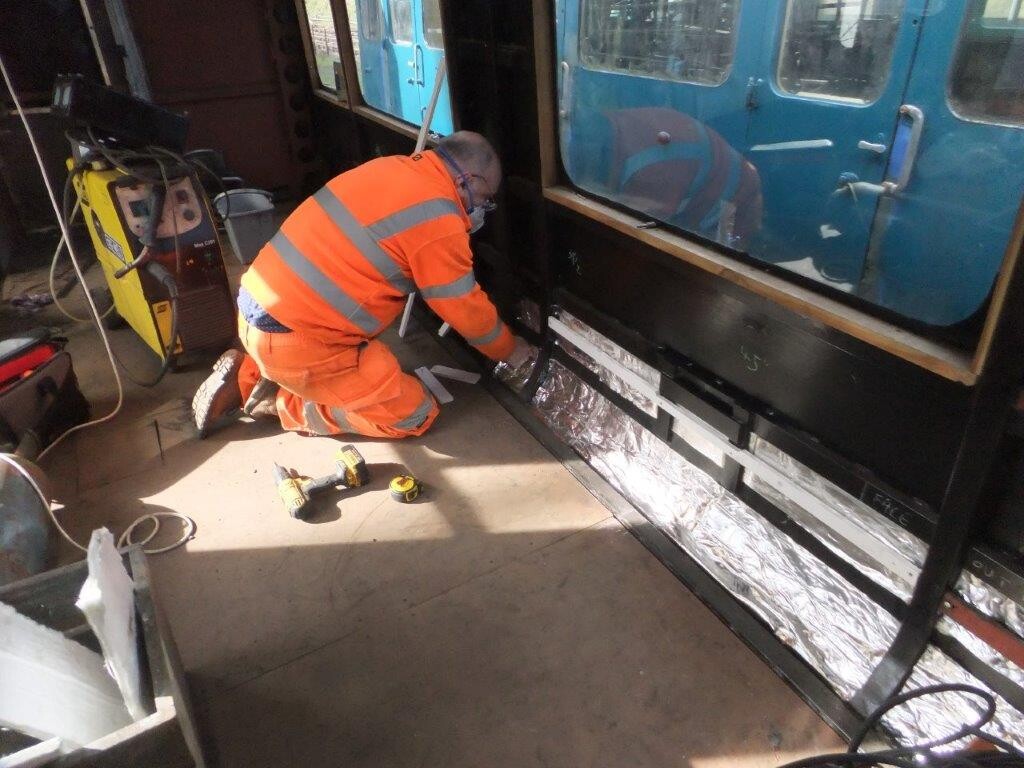
The following picture is of the rear compartment looking forwards with the heater trunking and insulation in place...
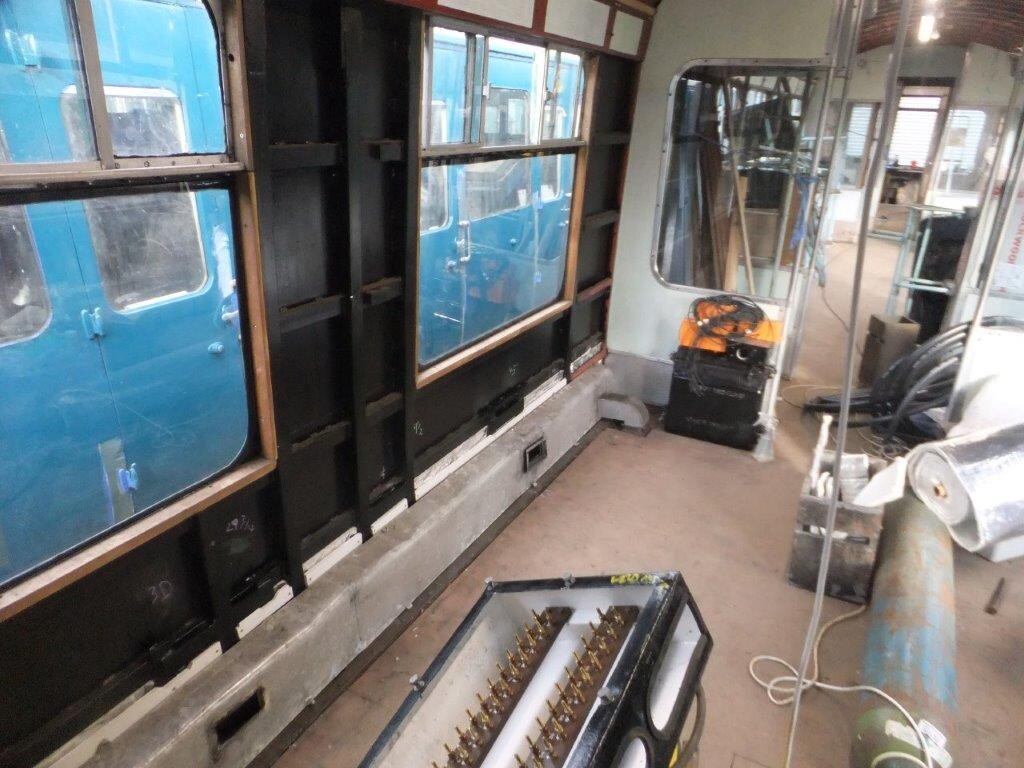
...and the following one shows why the rear compartment has inward-facing seats by the vestibule wall...

Since the previous report the welder has welded in the seat brackets on the walls throughout the entire vehicle.
The second battery box was cleaned up and had primer applied to most of it (some of it being inaccessible until the box is turned over)...
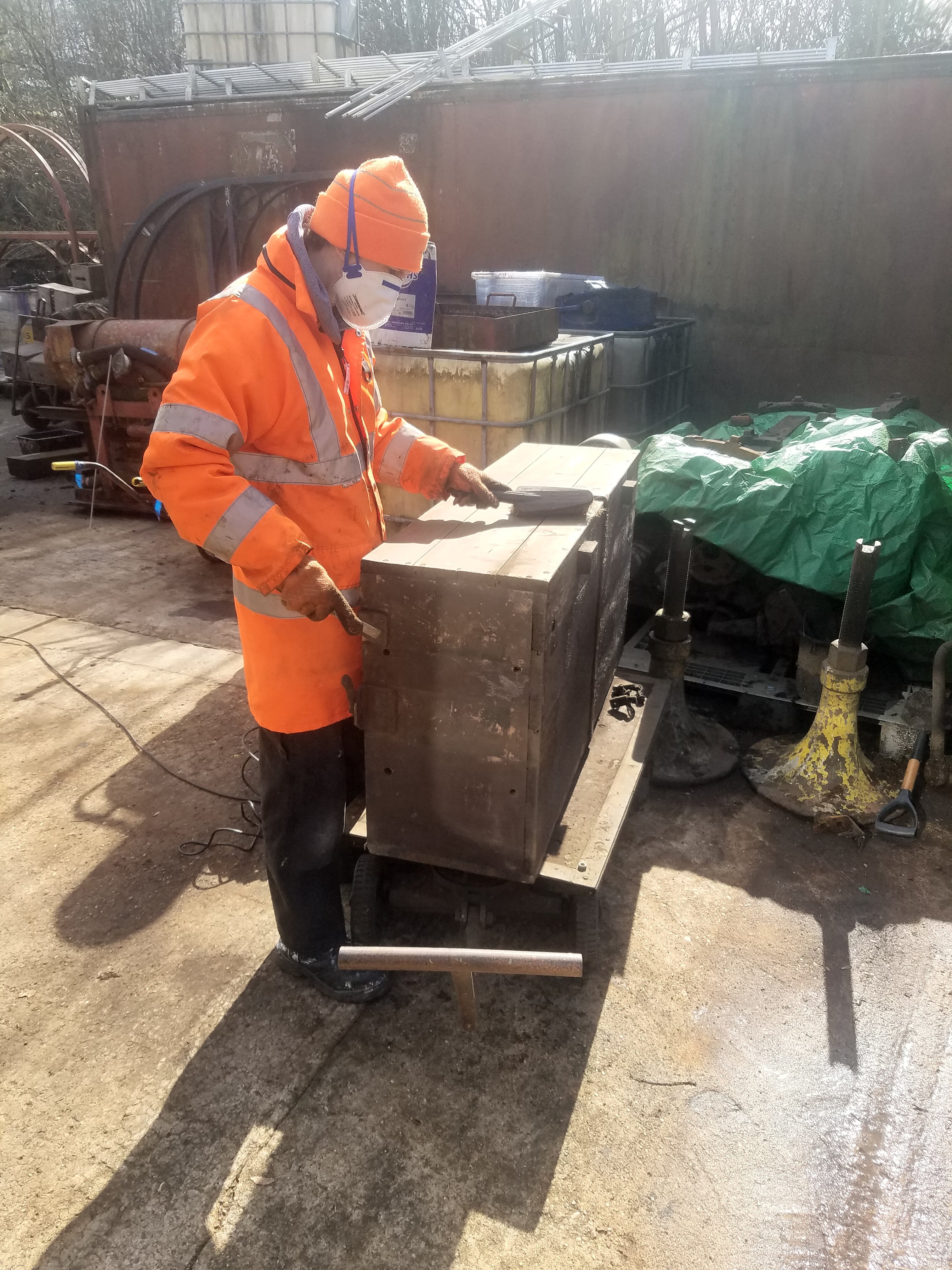
...and an assortment of other items was cleaned and primed including interior door panels and pull boards, bump stops, an aluminium kick plate from the saloon, and some other small items.
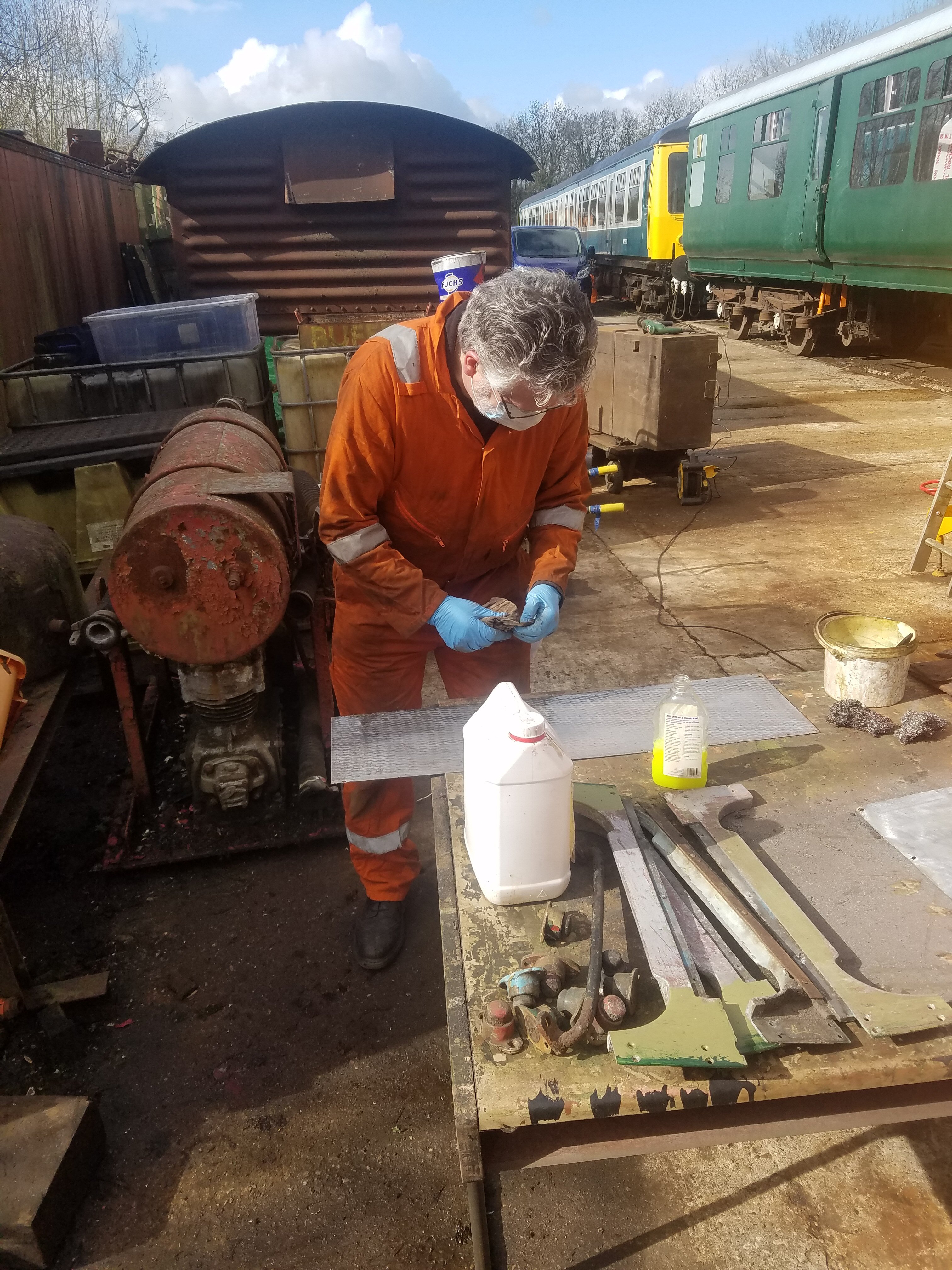
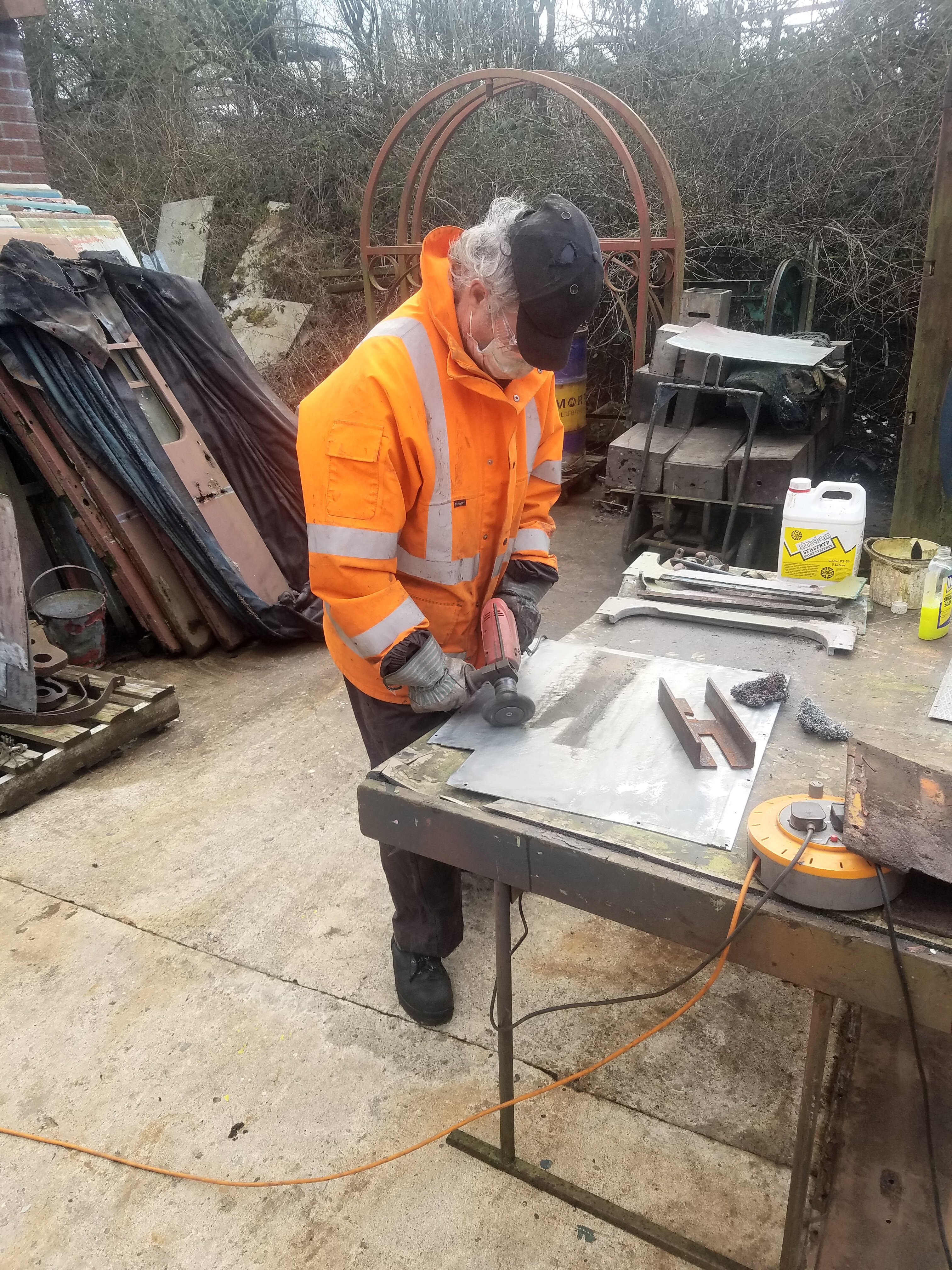
A couple more covers, which were found on electricals underneath, were removed and added to the cleaning-up pile and the conduit from the cab towards the speedometer generator was installed in readiness for the installation of the speedometer at a later date.
I will start by wishing all of our readers a belated Happy New Year!
We were pleased to be allowed to return to Pentrefelin after yet another long, enforced absence due to the Coronavirus restrictions and, in readiness for playing our part in getting the Railway up-and-running again, we carried out 'A' exams on all three units that are currently operational (classes 104, 108 and 109). The 'A' exam involves a thorough check of the mechanical and electrical components and provides the necessary assurance that a unit is fit to run.
One of the items on the 'A' exam worksheet is the topping up of batteries for which the essential equipment is a watering can and a combined mirror/torch...

As is often the case with exams, we identified the need for some additional work but, on this occasion, there were also some things that had occurred as a result of the units being deprived of tender loving care during the winter months. Had we been able to make regular visits as we would in a 'normal' year we could have spotted some of the problems and nipped them in the bud. Further detail can be found under Unit-specific work below.
Work has taken place at both sites (Llangollen and Butterley) as described below.
Class 104
The 'A' exam led to the following discoveries and additional work:-
A wall panel has suffered some water damage so it will be necessary to repair the damage as well as identify, and fix, the source of the water ingress.
Some brake blocks were replaced on 50528 and the brakes adjusted to suit...
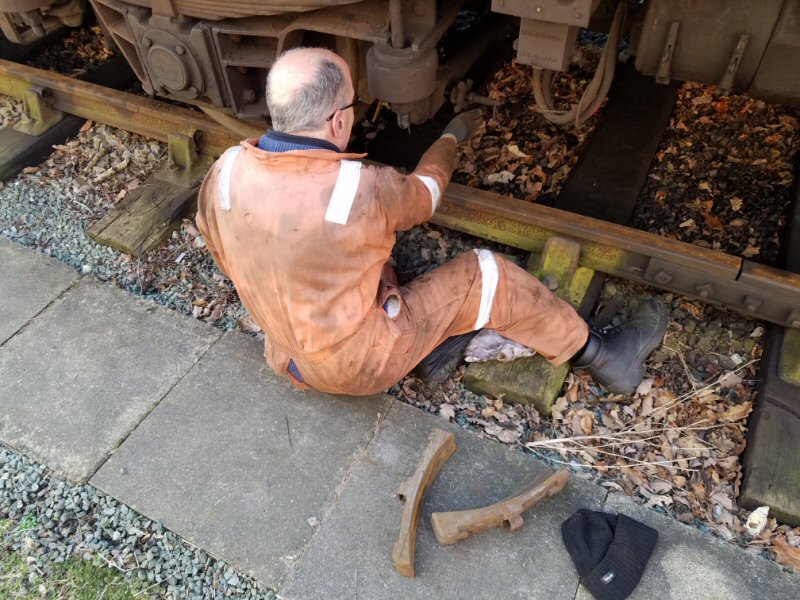
A vacuum brake cylinder on 50528 was found to be leaking off and, whilst the finger of suspicion initially pointed to the release valve, that turned out to be innocent so the cylinder will need to be dropped down for inspection and overhaul.
Class 108
The 'A' exam led to the following discoveries and additional work:-
The guard's van ceiling in 51933 has been damaged as a result of significant water ingress. It was given a good clean but will need to be repaired at a later date after the problem with the roof has been identified and fixed.
After being started up, the unit refused to make a significant of compressed air. It turned out that the body of the air system dirt trap on the trailer car has fractured, presumably due to accumulated water freezing. Removing the trap turned out to be rather more complex than expected because one of its securing nuts was hidden behind the junction box for the AWS receiver that had been bolted to the opposite side of the same bit of chassis. On removal, the use of Windolene* as a leak-detector spray...
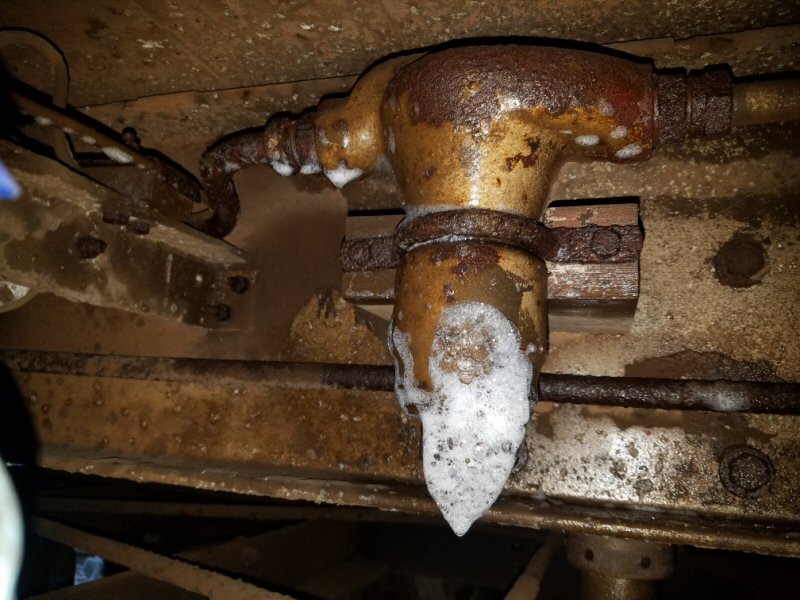
revealed that the trap is badly cracked so it will be necessary to work out if the best course of action will be to repair it, source a spare, or replace it with a modern alternative.
* Other cleaning- and leak-detection products are available :-)
Class 109
The 'A' exam led to the following discoveries and additional work:-
A 'hockeystick' on the side of one of the seats in 50416 was replaced and the 1st class sliding door in 56171 was dealt with because the screws holding its window frame in had taken to chewing up the window frame on the partition and vice versa. The latter had been fixed before so we were not sure why it had reverted to misbehaving.
Class 100 trailer car no. 56097 (under restoration at the Midland Railway, Butterley)
The walls were marked out in readiness for the welder to install the seat supports. Before that could be done, though, some floor panels had to be taken up, in order to find the positions of the corresponding seat supports in the floor, and then fastened down again. The picture shows the marked-out wall in the rear second class compartment...
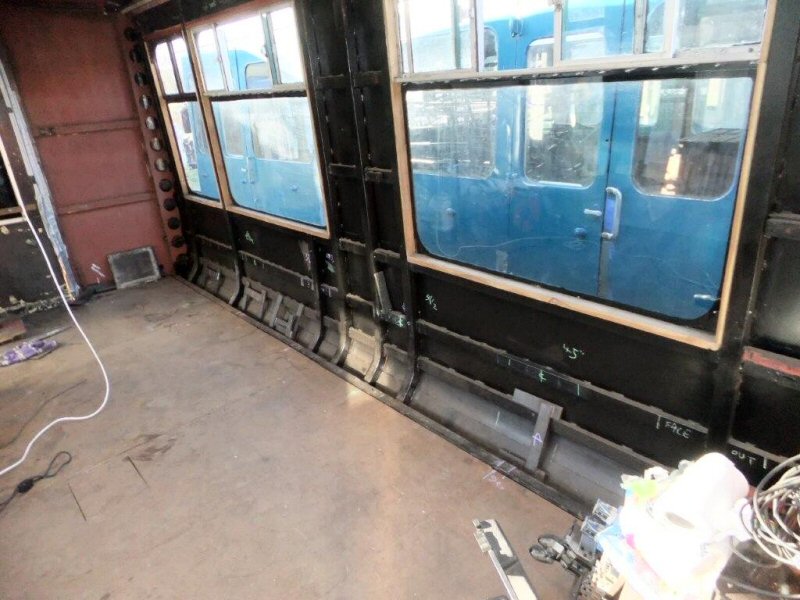
Great progress was made with the installation of further insulation round the heater ducting and windows, and more heater ducting was installed in the first class section...
